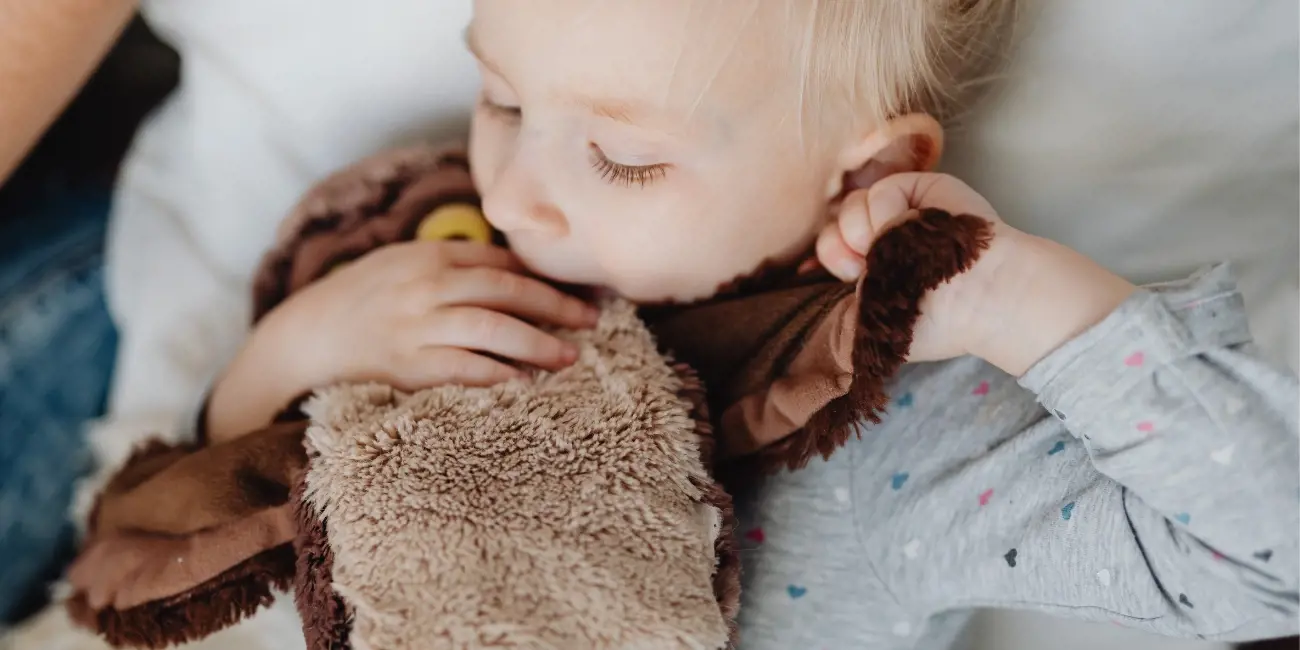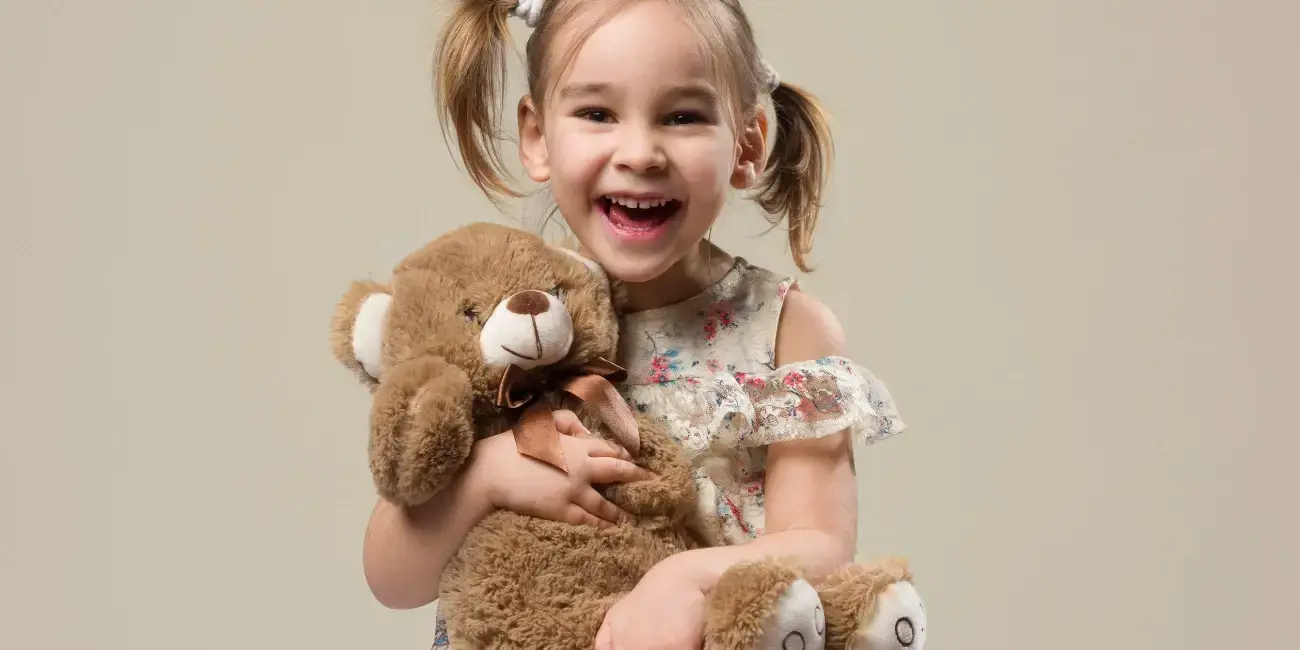Whether they're cosying up to a velvety blankie or cuddling a flea-bitten dog toy, comfort objects are a positive addition to little people's lives. They have a special way of supporting babies and children as they rest, play, and grow; and over time, these well-loved items become part of the family.

We look at the child-comforter relationship, with some insights from paediatric and child psychology experts.
What are comfort objects?
As the name suggests, comfort objects are items that provide comfort to infants and children to help them feel calm and secure. They're usually snuggled at bedtime but can soothe youngsters through the day as well.
These objects are also known as 'loveys' (because youngsters form a close connection with them) or 'transitional objects' (because they help children transition from being dependent babies to independent older children).
Although different children find comfort in different objects, loveys are usually soft, cuddly, and nice to touch. Some common types are:
- Soft toys such as a teddy or plushie
- Blankets like a fluffy blankie or Kippins baby comforter
- Part of a parent's clothing, for instance, a silky tie or dressing gown trim
Read more about sleeping through childcare illnesses
Why do children become so attached to comfort objects?
Many children have comfort objects, and there are several reasons why a threadbare teddy or Mum's satin handkerchief is so important to its owner. According to the American Academy of Pediatrics, 'Security objects … are part of the emotional support system every child needs in [their] early years.'
Paediatrician and psychoanalyst, Donald Winnicott, says that comfort objects are a reminder of love and security.
Australia's celebrated children's health expert, Professor Frank Oberklaid, explains that a child's love for their comfort object is a side effect of their wider developmental needs. In other words, transition objects provide the predictability that youngsters require as they separate from their parents (e.g. at bedtime) and gain independence.
Although two comfort objects might look alike, the child's preferred item has a special emotional pull. According to a psychological study by British professor, Bruce Hood, and American professor, Paul Bloom, children become attached to their particular toy or blankie because of an intuitive belief that it has a unique essence or life force.
Professor Hood says that even though children, 'Know these objects are not alive … they believe in them as if they are' and when given the option of an identical-looking object, the majority of children prefer to keep their original item. It is familiar to them, it smells like them and it has that unique essence no look-alike can mimic.

What are the benefits of comfort objects?
Overall, transitional objects make children feel good and help them manage new experiences. Comfort objects:
- Help children relax and get to sleep
- Are companions that children can talk to, sleep alongside, and share experiences
- Provide reassurance when children are separated from their parents, e.g. at bedtime or childcare
- Provide comfort when children are frightened or upset
- Help children feel secure in unfamiliar environments by providing a link between a new situation and the comfort of home
Many, but not all, children have comfort objects. The Guardian says, 'Studies have shown that up to 70 percent of young children develop strong attachments to objects such as toys or blankets.' However, it's interesting to note that, 'The phenomenon tends to be confined to the Western world, where children usually sleep apart from their parents at an early age.'
When should children give up their comfort toys?
Although a parent might feel that it's time for their child to let the lovey go, there's no 'normal' age for a child to move on from their comfort toy.
Professor Oberklaid says children grow out of the habit at different times and, 'The age they stop using [comfort] objects varies according to the child, the family situation, the child's temperament [and] experience.'
He adds, 'We see eight-year-olds still with a bunny they had when they were twelve-months-old, and other children for whom the choice of an object has changed over time. What I try to do is normalise all of that behaviour,' instead of setting ages where comfort toys are seen as 'abnormal'.
Saying that, if an older child is 'too attached' to their comfort object, parents should consider whether the child is anxious about something else in their lives.
Although one study found that children with strong bonds to comfort objects have stronger attachments to a parent and are happier than those without a lovey, the same study found that teenagers who need their comfort objects daily may have poorer mental health.
Should children take comfort toys to childcare?
Again, this comes down to the temperament of the child. Professor Oberklaid says that 'Parents need to make that decision based on their instinct. For some kids, the thought of separation from something at any time is so traumatic that by all means let them take it. For others, you can reason with them and tell them Teddy will be in their room when they get home.'
If the child does take their lovey to care, then it's fair enough to treat this item differently. Although sharing is an important social skill to practice, it's ok if the child doesn't want to hand their transitional toy to anyone else. It's completely understandable.
References



































